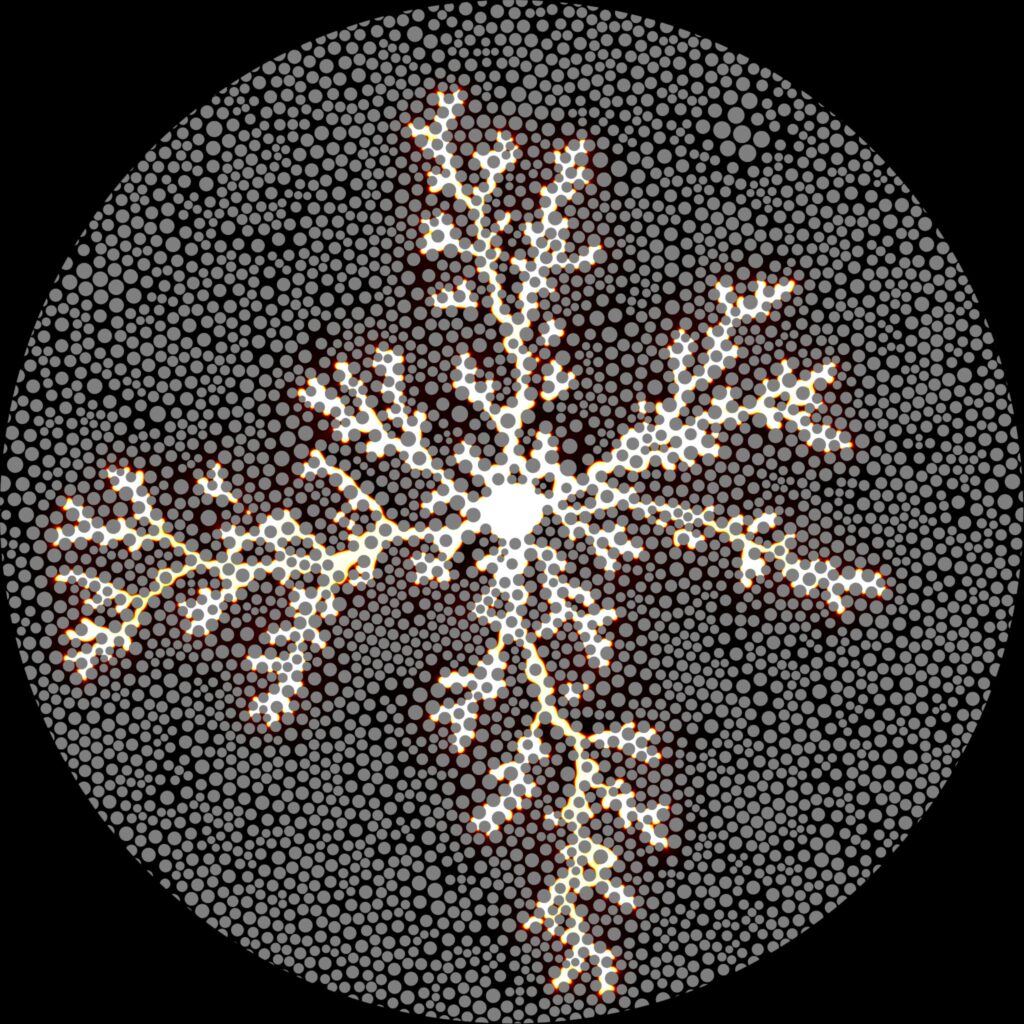
A paper that I contributed simulations to was recently published in the journal PNAS. The contributors were asked to simulate the pore-scale oil/water displacement pattern in a radial Hele-Shaw cell with posts, under different injection rates and wettability conditions. Experimental data was provided and the idea was to compare the pros and cons of different modeling techniques. It was a challenging task.
I submitted phase-field results which were accurate for several of the cases, but like many techniques struggled with strong imbibition. I would like to point out one correction that never made it into the final paper. Fig. 4B shows my results, PF2, producing a very inaccurate finger width of Wf=93. This value was calculated from my original submission, which stopped well before the injected fluid reached the boundary. During revision I ran the simulation to completion (see results in supplementary information) which produced a finger width of Wf=20, close to the experimental value. Unfortunately I missed that Fig 4B was not updated with the correct Wf in the final revision, and the paper was published with the old value.

